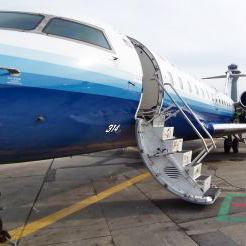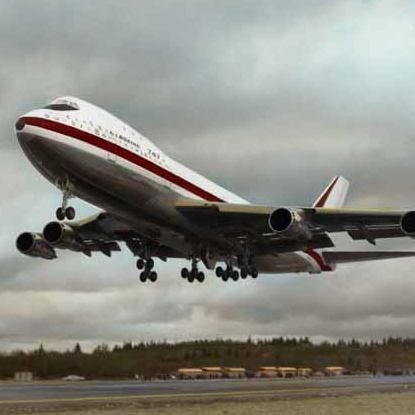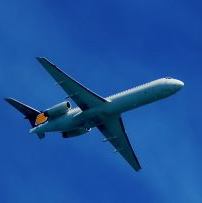Travel News
Sleeping Air Traffic Controllers & What Needs To Be Done In Aviation Safety
 The hot-button topic of aviation safety has dominated the news lately.
The hot-button topic of aviation safety has dominated the news lately.
Between sleepy air traffic controllers and questionable decisions by the FAA, it’s a topic that concerns all air travelers.
Just how safe are we in the skies? Peter recently spoke with USA Today’s Ben Mutzabaugh to hash out the issues.
Peter Greenberg: In the last couple of weeks, it’s been almost a circus of air traffic controllers either asleep at the tower, or worse, watching Samuel L. Jackson movies on the job. It always makes me laugh when the FAA, confronted with incontrovertible facts about their staffing issues of being 17 percent under where they should be, says they’re going to issue a sweeping review of staffing. You don’t need a sweeping review to do the math: You need to hire more people and you need to train them well. The problem is that it takes three years of very intense training before they’ll even let an air traffic controller rookie sit at a screen without anybody supervising them. So we’ve got a rather acute problem that doesn’t need a survey, and it doesn’t need a study; it needs action.
Ben Mutzabaugh: First, I think we have to point out that flying is still safe in the United States. I don’t think that we should be questioning that. But there have been a number of high-profile incidents.
Fallout from the incidents: FAA’s Chief Air Traffic Control Officer Resigns In Wake Of Sleeping Controller Scandals
 PG: You’re right, let’s be fair about this. We’ve just gone through the most remarkably safe history in U.S. aviation history. In the last two years, there has been not a single fatality in a commercially scheduled airline in the United States.
PG: You’re right, let’s be fair about this. We’ve just gone through the most remarkably safe history in U.S. aviation history. In the last two years, there has been not a single fatality in a commercially scheduled airline in the United States.
Now having said that, the absence of an accident should never presume the presence of safety. We have become complacent in terms of the outsourcing of maintenance. We don’t have enough FAA inspectors to properly inspect the work at these outsourced maintenance and repair operations. When you send an FAA inspector once every six months, they know he’s coming, and instead of inspecting the work, he inspects the paperwork. Anybody can tick off a box.
BM: I think you raise an excellent point. You have to avoid becoming complacent just because things have been performing well. As they say on all the stock market claims, past performance is not an indication of future achievement. The same thing applies to safety, whether it’s in air traffic or maintenance. In the case of air traffic controllers you have the FAA’s version of what will make things safe and the air traffic controller union’s version of what will make things safer. The answer is, it’s usually somewhere in the middle.
PG: I was talking to the president of the Air Traffic Control Association, which has been sort of hand-tied ever since 1981. When the union wanted a strike, Ronald Reagan fired them all. They were replaced, and those replacements retired about 20 to 25 years later, which was about 5 years ago. The FAA did not move at anything other than glacier-like speed to replace them. That, in a way, gives us an idea of why we are where we are now. The union president said, the way they want us to train controllers now is like asking a 17-year-old-kid in high school to pitch the last game of the World Series through a no-hitter. It doesn’t work that way.
Previously: Air Traffic Control Staffing Concerns & Frequent-Flier Face-Lifts
 BM: That job is one of the most stressful probably that anyone could have. You need lightening-quick reflexes, calm nerves, being able to handle a possible crisis at any moment, and possibly several at the same time. It’s not an easy job, and the people who have done it so far certainly have done it well. But it’s not as simple as swelling the ranks with new recruits. You’ve got to get them in there; you’ve got to get them up to speed. They don’t show up in school today and become competent air traffic controllers tomorrow.
BM: That job is one of the most stressful probably that anyone could have. You need lightening-quick reflexes, calm nerves, being able to handle a possible crisis at any moment, and possibly several at the same time. It’s not an easy job, and the people who have done it so far certainly have done it well. But it’s not as simple as swelling the ranks with new recruits. You’ve got to get them in there; you’ve got to get them up to speed. They don’t show up in school today and become competent air traffic controllers tomorrow.
PG: Well speaking of challenge and fatigue, let’s move from the air traffic control center to the pilots. In January of 2009 we had that terrible crash in Buffalo, New York of the Colgan Air plane. It was clearly an avoidable situation, where you had two improperly trained pilots, one of whom was clearly fatigued. The airline pilots and everybody else had been trying to get the FAA to implement new rest rules to make sure that at least you don’t have those ingredients present. And it’s still not where it’s supposed to be.
BM: Fortunately, the way the aviation system is built in the United States, we have built in so many layers of redundancies as far as safety issues, so that if one thing goes wrong it doesn’t cascade. Typically it’s caught at the next level. That Buffalo crash, you did see four or five things go wrong that led to that cascading failure that resulted in that crash.
Find out: What Does It Take To Be An Air Traffic Controller?
 But of course one crash is one crash too many. It shows the trouble that how difficult it can be to get what seems like a simple fix. The FAA has proposed new limits to prevent these things but even then they aren’t taking the advice of their own research they did a couple of years ago. If you can’t even get the same agency on the same side with themselves, it’s hard to align everyone else.
But of course one crash is one crash too many. It shows the trouble that how difficult it can be to get what seems like a simple fix. The FAA has proposed new limits to prevent these things but even then they aren’t taking the advice of their own research they did a couple of years ago. If you can’t even get the same agency on the same side with themselves, it’s hard to align everyone else.
PG: This gets me back to child safety seats. The FAA has known for 25 years that no parent can adequately maintain the grasp of a child under the age of 2 sitting on their lap. In a survivable crash or in an aborted take off, that kid becomes a missile. They’ve known about it, the NTSB investigated it and made urgent safety recommendations.
To which the FAA responded saying, OK we want to study it too. So they studied it and came up with the exact same results. Face with incontrovertible evidence, they said, we are not going to require airlines to provide safety restraint seats for kids under the age of 2. If we did the airlines would just raise their airfares and then people who would otherwise fly would just drive and be killed in automobile accidents. The last time I looked the FAA was not in charges of highway safety; the FAA is in charge of air safety. This is clearly an economic decision on their part and they’re wrong.
By Peter Greenberg for Peter Greenberg Worldwide Radio.
Related links on PeterGreenberg.com:
- FAA’s Chief Air Traffic Control Officer Resigns In Wake Of Sleeping Controller Scandals
- Air Traffic Control Staffing Concerns & Frequent-Flier Face-Lifts
- Washington’s Reagan National Airport Air Traffic Controller Allegedly Falls Asleep, Putting Planes At Risk
- What Does It Take To Be An Air Traffic Controller?
- Air Traffic Controller Mistakes Double As Serious Safety Incidents Reported
- Air Travel News: Airports & Airlines section












